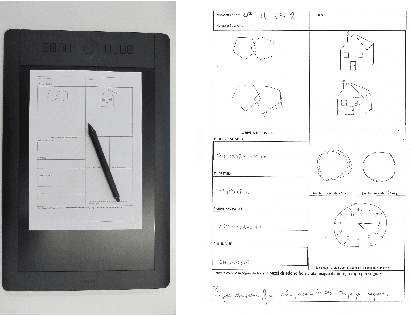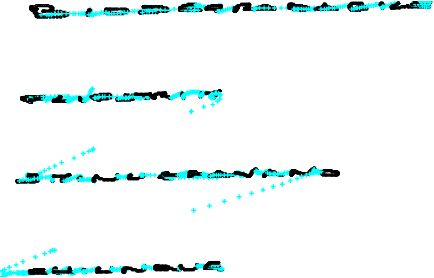Gennaro Cordasco
Exploring Emotion Expression Recognition in Older Adults Interacting with a Virtual Coach
Nov 09, 2023Abstract:The EMPATHIC project aimed to design an emotionally expressive virtual coach capable of engaging healthy seniors to improve well-being and promote independent aging. One of the core aspects of the system is its human sensing capabilities, allowing for the perception of emotional states to provide a personalized experience. This paper outlines the development of the emotion expression recognition module of the virtual coach, encompassing data collection, annotation design, and a first methodological approach, all tailored to the project requirements. With the latter, we investigate the role of various modalities, individually and combined, for discrete emotion expression recognition in this context: speech from audio, and facial expressions, gaze, and head dynamics from video. The collected corpus includes users from Spain, France, and Norway, and was annotated separately for the audio and video channels with distinct emotional labels, allowing for a performance comparison across cultures and label types. Results confirm the informative power of the modalities studied for the emotional categories considered, with multimodal methods generally outperforming others (around 68% accuracy with audio labels and 72-74% with video labels). The findings are expected to contribute to the limited literature on emotion recognition applied to older adults in conversational human-machine interaction.
Handwriting and Drawing for Depression Detection: A Preliminary Study
Feb 05, 2023Abstract:The events of the past 2 years related to the pandemic have shown that it is increasingly important to find new tools to help mental health experts in diagnosing mood disorders. Leaving aside the longcovid cognitive (e.g., difficulty in concentration) and bodily (e.g., loss of smell) effects, the short-term covid effects on mental health were a significant increase in anxiety and depressive symptoms. The aim of this study is to use a new tool, the online handwriting and drawing analysis, to discriminate between healthy individuals and depressed patients. To this aim, patients with clinical depression (n = 14), individuals with high sub-clinical (diagnosed by a test rather than a doctor) depressive traits (n = 15) and healthy individuals (n = 20) were recruited and asked to perform four online drawing /handwriting tasks using a digitizing tablet and a special writing device. From the raw collected online data, seventeen drawing/writing features (categorized into five categories) were extracted, and compared among the three groups of the involved participants, through ANOVA repeated measures analyses. Results shows that Time features are more effective in discriminating between healthy and participants with sub-clinical depressive characteristics. On the other hand, Ductus and Pressure features are more effective in discriminating between clinical depressed and healthy participants.
EMOTHAW: A novel database for emotional state recognition from handwriting
Feb 23, 2022



Abstract:The detection of negative emotions through daily activities such as handwriting is useful for promoting well-being. The spread of human-machine interfaces such as tablets makes the collection of handwriting samples easier. In this context, we present a first publicly available handwriting database which relates emotional states to handwriting, that we call EMOTHAW. This database includes samples of 129 participants whose emotional states, namely anxiety, depression and stress, are assessed by the Depression Anxiety Stress Scales (DASS) questionnaire. Seven tasks are recorded through a digitizing tablet: pentagons and house drawing, words copied in handprint, circles and clock drawing, and one sentence copied in cursive writing. Records consist in pen positions, on-paper and in-air, time stamp, pressure, pen azimuth and altitude. We report our analysis on this database. From collected data, we first compute measurements related to timing and ductus. We compute separate measurements according to the position of the writing device: on paper or in-air. We analyse and classify this set of measurements (referred to as features) using a random forest approach. This latter is a machine learning method [2], based on an ensemble of decision trees, which includes a feature ranking process. We use this ranking process to identify the features which best reveal a targeted emotional state. We then build random forest classifiers associated to each emotional state. Our results, obtained from cross-validation experiments, show that the targeted emotional states can be identified with accuracies ranging from 60% to 71%.
* 31 pages
 Add to Chrome
Add to Chrome Add to Firefox
Add to Firefox Add to Edge
Add to Edge